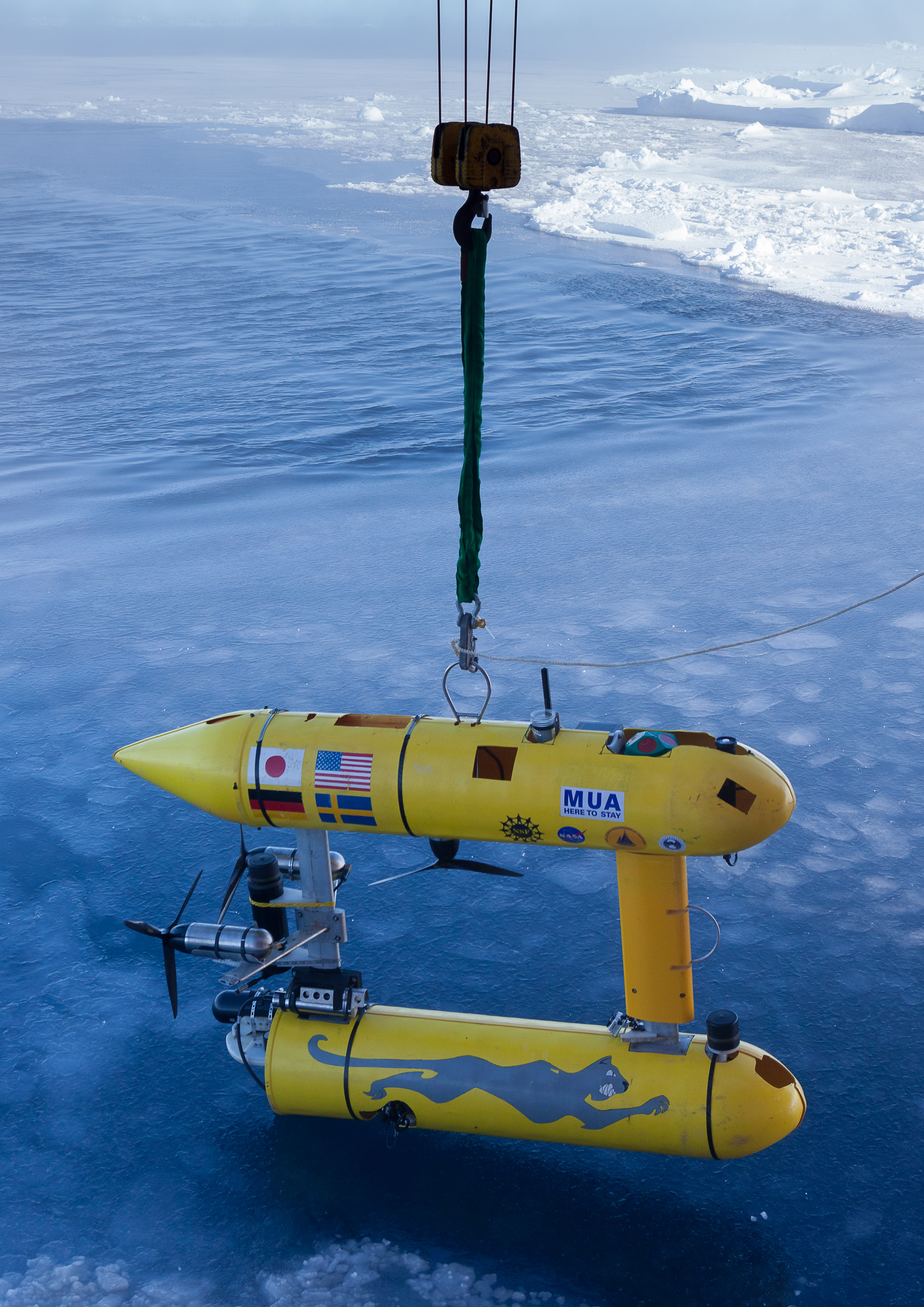Robot Sub Finds Surprisingly Thick Antarctic Sea Ice

Antarctica's ice paradox has yet another puzzling layer. Not only is the amount of sea ice increasing each year, but an underwater robot now shows the ice is also much thicker than was previously thought, a new study reports.
The discovery adds to the ongoing mystery of Antarctica's expanding sea ice. According to climate models, the region's sea ice should be shrinking each year because of global warming. Instead, satellite observations show the ice is expanding, and the continent's sea ice has set new records for the past three winters. At the same time, Antarctica's ice sheet (the glacial ice on land) is melting and retreating.
Measuring sea ice thickness is a crucial step in understanding what's driving the growth of sea ice, said study co-author Ted Maksym, an oceanographer at the Woods Hole Oceanographic Institution in Massachusetts. Climate scientists need to know if the sea ice expansion also includes underwater thickening. [Album: Stunning Photos of Antarctic Ice]
"If we don't know how much ice is there is, we can't validate the models we use to understand the global climate," Maksym told Live Science. "It looks like there are significant areas of thick ice that are probably not accounted for."
The findings were published today (Nov. 24) in the journal Nature Geoscience.
Like icebergs, much of Antarctica's floating sea ice is underwater, hidden from satellites that track seasonal sea ice. And it's difficult to take direct measurements from ships or drilling, because the thickest ice is also the hardest to reach, Maksym said.
The researchers were stuck aboard an icebreaker in 20-foot-thick (6 meters) pack ice for more than a week after taking advantage of a lead, or open water, that accessed thick ice, he said. "Obviously that carried some risk, and we were stuck until the wind changed direction again," he said.
Get the world’s most fascinating discoveries delivered straight to your inbox.
Pinging the ice
Over the last four years, the international group of researchers has mapped the bottom of sea ice with an underwater robot, or autonomous underwater vehicle (AUV), during two research cruises offshore Antarctica. The AUV can swim to a depth of about 100 feet (30 m) and has upward-looking sonar to survey the bottom of the sea ice.
"With the AUV, you can get under ice that is either difficult to access or difficult to drill, and in each region, we found some really thick ice, thicker than had been measured anywhere else," Maksym said.
Almost all of the sea ice that forms during the Antarctic winter melts during the summer, so scientists had assumed most of the ice never grew very thick. Previous studies suggested the ice was usually 3 to 6 feet (1 to 2 m) thick, with a few rare spots reaching up to 16 feet (5 m) in thickness. For comparison, most of the Arctic sea ice is twice as thick (6 to 9 feet, or 2 to 3 m), with some regions covered with 12 to 15 feet (4 to 5 m) of ice. [50 Amazing Facts About Antarctica]
The robot sub surveys, which were spot-checked by drilling and shipboard tests, suggest Antarctica's average ice thickness is considerably higher than previous estimates. On average, the thickness of the ice was 4.6 to 18 feet (1.4 to 5.5 m). In the three regions it surveyed, the robot sub found that deformed, thickened ice accounted for at least half of and as much as 76 percent of the total ice volume, the researchers report.
"Our study shows that we're probably missing some of this thick ice, and we need to try to account for that when we try to compare what we see in models and satellites to what we see in the field," Maksym said.
The thickest ice measured during the survey was about 65 feet (20 m) thick, in the Bellingshausen Sea, Maksym told Live Science. In the Weddell Sea, the maximum ice thickness hit more than 45 feet (14 m), and offshore of Wilkes Land, the ice was about 53 feet (16 m) thick.
Next steps
These thick, craggy floes likely wouldn't exist without the fierce winds that circle Antarctica from west to east, the researchers said. Winter storms bash up the ice, freezing and reforming the rubble into new, thicker ice. "It must have been crunched up a tremendous amount and [the floes] piled up on top of each other," Maksym said. "The ice can generate enormous amounts of force if you have these strong winds. [The wind] is like an accordion, stretching it out and squishing it back together again."
The researchers' next step is to measure how much of Antarctica's total sea ice this thick ice represents. Maksym said it could be a "reasonably significant area of the pack."
The sea ice growth around Antarctica has averaged about 1.2 percent to 1.8 percent per decade between 1979 and 2012, according to the 2013 Intergovernmental Panel on Climate Change's Fifth Assessment Report. The increases are concentrated primarily in the Ross Sea in western Antarctica. Sea ice in the nearby Bellingshausen and Amundsen seas has significantly decreased. Researchers suspect these regional differences could result from stronger winds or increased meltwater from the Antarctic ice sheet, or a combination of both factors.
Follow Becky Oskin @beckyoskin. Follow Live Science @livescience, Facebook & Google+. Originally published on Live Science.


